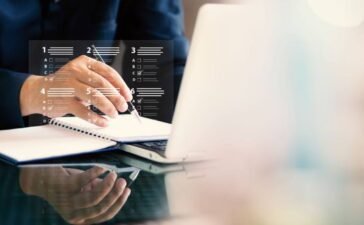
Advanced Education Accessibility For Minority Groups
In the rapidly evolving and expanding economies of the world today, access to quality education is more important than ever. While many of these systems have been in place for over a century in most first world countries, there are still places and ways in which the educational systems are lacking. As with many other social justice movements in the last half-century or so in the US, there has been a lot of growth in advocating for people not only out of need, but also from the necessity to maintain human rights.
Despite these many movements, the complexity and expansiveness of a nation that houses hundreds of millions of people cannot create lasting change overnight. Additionally, the momentum behind social justice movements that represent a greater percentage of the population tends to accrue a greater level of advancement and success.
While this is by no means a reason that should excuse the presence of inequality in any sphere or system, it is a reality that needs to be wrestled with. Posing the right questions, field testing, and expanding policies put into place and then weighing their effectiveness are all part of the process of effective implementation. Despite the efforts of many people, there remains an active imbalance of accessibility for advanced education. The good news is that conversations have been started. Here are some ways that the US can better transform educational initiatives and accessibility for underrepresented groups through modern eLearning technologies and techniques.
Educational Accessibility
Education is a powerful tool that can transform lives and open doors to opportunities. Educational accessibility is crucial for ensuring that all individuals have the opportunity to learn and succeed. Just because a nursing school is hard to get into does not mean that it should exclude capable students.
By making educational resources available to everyone, barriers to learning can be broken down to create a more inclusive society. Underrepresented groups can and should be identified as having a need for greater intervention in ensuring their access to education. Some of those groups include low-income individuals, people with disabilities, and those living in remote areas.
Additionally, these approaches are especially important for individuals who may face challenges in accessing traditional educational materials. By making advanced education accessible to underrepresented groups through eLearning, individuals are empowered to reach the goals they set for themselves.
eLearning, or electronic learning, refers to the use of technology to deliver educational content inside and outside of a traditional classroom setting through the addition of resources to traditional educational methods. With the advent of the internet and digital devices, eLearning has become increasingly popular and widely accessible. This mode of learning offers flexibility, convenience, and cost-effectiveness, making it an ideal solution for individuals who face barriers to traditional education.
For underrepresented groups, accessing advanced education can be challenging due to factors such as financial constraints, physical disabilities, or a lack of educational institutions in their vicinity. eLearning bridges these gaps by providing an inclusive platform that accommodates diverse learning needs no matter if the program is high school English or a doctorate of nursing program.
Strategies for Enhancing Educational Accessibility Through eLearning
Use Of Assistive Technologies
One of the most effective ways to enhance educational accessibility is through the use of assistive technologies. These tools can help individuals access and interact with online content more easily. Some common assistive technologies include screen readers, speech recognition software, and alternative input devices. While much of this technology has been very niche and expensive in past decades, they are now more affordable to schools with tight budgets.
Additionally, telecommunication technologies and social media platforms have made connecting virtually much easier. As such, there are a whole host of online courses, webinars, and virtual classrooms that are now much more affordable to individuals with access to high-quality education regardless of their location or background.
Designing For Accessibility
When creating eLearning materials, it’s important to design with accessibility in mind. This includes using clear fonts, providing alt text for images, and ensuring that the content is navigable using a keyboard. For individuals with hearing impairments, providing captioning and transcripts for audio and video content is essential. This allows all learners to access the information presented in eLearning formats. By following accessibility best practices, eLearning materials create a more inclusive and user-friendly environment for all learners.
Providing Multiple Modes Of Engagement
Another key strategy for enhancing educational accessibility is to provide multiple modes of engagement. Multiple modes of engagement refer to the various ways in which learners can interact with the educational content. This can include visual, auditory, kinesthetic, and interactive elements that cater to different learning styles and preferences.
By offering a mix of these modes, educators can create a more inclusive and engaging learning experience for all students. This can include offering video lectures, interactive quizzes, and written assignments. By presenting information in different formats, all individuals can be accommodated no matter their learning styles or preferences.





